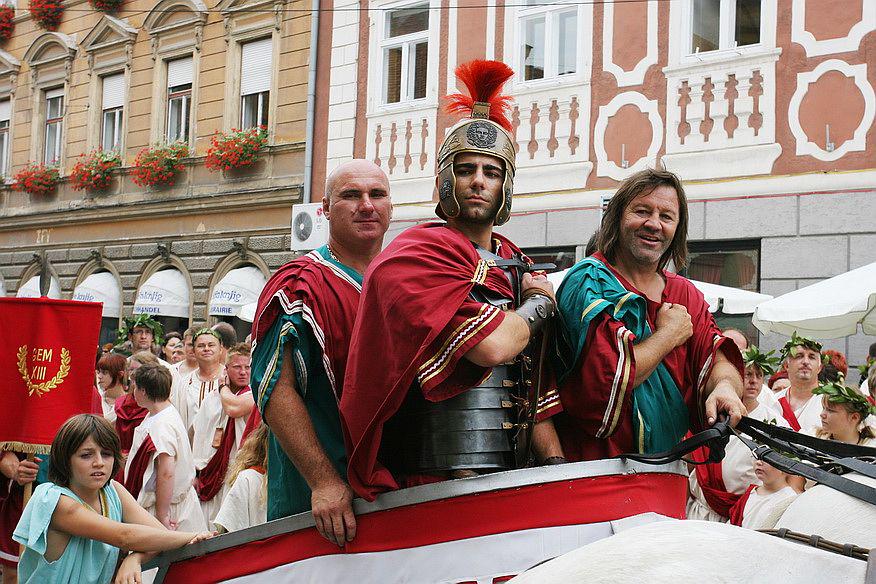
In recent years, Ptuj has emerged as a popular tourist destination in eastern Slovenia. Even though most visitors come to admire the beautifully preserved medieval architecture of the Old Town, Ptuj’s history goes back much further: The ancient Poetovio, as Ptuj was once known, was one of the most important places in Central Europe.
The first settlements in the area date back to Celtic times. After the Romans came to what is now Ptuj, the town solidified its position as an important waystation on the trade route between the Adriatic, the Pannonian Plain, the Balkans, and even the Baltic. By the first century A.D., it was also an important military post for legionaries, who not only successfully extended the Roman Empire into the Pannonian Plain, but also wielded considerable political influence; they helped to make Vespasian the Emperor of Rome.
Another emperor – Trajan – granted Poetovio civic rights and was most likely responsible for the construction of a forum in the heart of the town. An elaborate temple dedicated to Roman gods graced one end of the forum. Soon, people from various parts of the Roman Empire began to settle in the area, and most of the indigenous Celtic population was soon thoroughly Romanized.
Buy the 2nd century, the town was thriving; it measured several kilometers in length and was the home of more than 40,000 people and numerous workshops. It was one of the most vibrant Roman settlements in this part of Europe.
Its decline began in the 6th century, in large part a result of incursions of Huns into the area. Two centuries later, the first Slavs arrived in Ptuj, beginning the town’s modern era.
Recent archeological findings around Ptuj have shed new information about the town’s ancient residents and provided insight into a once little-known chapter of one of Slovenia’s most storied towns. Ptuj’s Roman past has also been embraced by its residents, who now organize an annual Roman Festival, which serves as a reminder of a time when their hometown was among Europe’s most important outposts.

































































